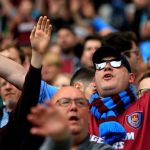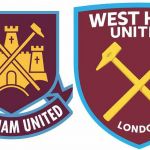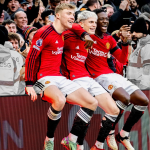
The evolution of the West Ham brand
Top market affairs without sporting exploit: what's happening in the new Hammers era?
July 22nd, 2019
In addition to the sporting dates to must remember - 1964, 1965, 1975, 1980 and, in recent times, thanks to the winning of the Intertoto Cup, 2000 - a great year in the history of West Ham was 2004, when of Hooligans - Green Street Hornet was released. A highly appreciated film outside national borders that in recent years has been proclaimed one of the most symbolic in the world of football. The West Ham was the team supported by Elijah Wood and partners and in the film all the great stereotypes of the football supporters' world emerge, both about hobbies and fashion. But beyond pints and Stone Island sweatshirts, the West Ham brand also becomes famous thanks to the film, especially for what concerns the representability of a club outside the strictly sporting context. As Tottenham Hotspur - located in one of the areas of North London - West Ham (along with the Millwall) represent a socially difficult London borough, the East End, the area of the London docks. On the other hand, the nicknames of the team in this sense are very eloquent: the Irons, the Hammers, those who work iron and hold anvils. From here the myth of a historic team from London and English football, which has always lived in an equally iconic British football facility, Boleyn Ground (or Upton Park, name of the neighborhood and the adjacent underground station).
The stadium
Entering in the old Boleyn Ground meant meeting a unique atmosphere but at the same time similar to other English stadiums: fish and chips, scarves around the fans' necks, soap bubbles before the start of the game, balloons collected directly in the front rows. Yet many fans complained about a basic discomfort that has become unsustainable for fans - tight spaces and worn out services, plus a certain complication related to the contingent area at the stadium, with Upton Park being dimly lit and dangerous at certain hours - and a new stadium, at least in terms of structure, it had become necessary.
From the East End three years ago they moved to the London Olympic Stadium, a very large venue built for the 2012 Olympics and taken over by West Ham as a new domestic playground for the next 99 years. A particularly economical bargain, among other things: the stadium was built with taxpayers' money (£ 600m) at the request of Boris Johnson - former mayor of London - but West Ham paid only £ 15m to have it. As was the case with Highbury, not all the fans took it well, for several reasons. First of all for what Boleyn Ground and its seats represented, a mythical stadium in which more than in other systems, players could perceive the warmth and proximity of their supporters on the pitch. Then for geographical reasons: it's located in Stratford, at least half an hour from Upton Park and certainly not in the original neighborhood of the team - although many have reported the very critical nature of this area. Finally for structural reasons: the London Stadium is the furthest thing there can be from an English stadium, with stands far from the pitch and stands that stand tall and dispersed (now, to solve the problem, President Sullivan has proposed to approach the stands to the field). Certainly the Hammers have gained us in modernity and capacity as the plant has a capacity of 60,000 seats (the old Boleyn Ground had just 36,000). Moreover, through some direct statements by Karren Brady (vice president of the Hammers), the club has admitted that it wants to expand the availability of another two thousand seats and therefore reach 62,000, effectively making the London Olympic Stadium the largest stadium in the city, surpassing those of Chelsea, Tottenham and Arsenal. Over the years the goal is to reach 66,000, which is the maximum capacity for a sporting event at this stadium: it would become the second biggest stadium of the Premier League after Old Trafford.
With this move, West Ham aims to become a more globalized and enlarged club, relying on today's need for a sports club that is no longer anchored to the sports results. And for this reason was noted. The Hammers have had difficulties for years in hoisting themselves as one of the best realities of the Premier League and even reaching European placement seems like a mirage every season. In this article written in 2017, The Guardian explained how it was inevitable that the Hammers would move to a new stadium and that, moreover, they wanted to aim to reach the revenues of other London clubs like Tottenham and Arsenal. And in this sense, West Ham has filled (and well) its own coffers, but on the pitch, also due to environmental reasons (wider field, more distant fans), the team has many difficulties every year. Moreover, since the club abandoned Boleyn Ground, the towers behind the crossed hammers disappeared from the social logo. Another sign of breaking with the past.

The brand
Needless to turn around, the West Ham brand is one of the most popular in the Premier League. The movie has certainly helped the brand's media expansion and as a result, even the identity of the club has become much more popular; the West Ham Old Firm was one of the most violent and famous of the hooligans 'period, so much so that the book written by Cass Pennant, one of the most representative figures of the Hammers' cheering, has attracted a lot of interest around the phenomenon. In the mass culture, West Ham has become a popular icon: the team has gone from being a quite normal club to a hub of a unscrupulous and hot support category. This has been very successful among the categories of enthusiasts of a certain type of football context, and therefore, thanks to this reputation, being a Hammers has become in recent years an example of style and sports culture, no longer just a team of the right part of the ranking. So it's normal the proliferation of symbols such as the club logo on scarves and sweatshirts, a benchmark that has become commercial and recognizable as a representative of a "support and tifo status". At the same time, the influence of celebrities and former players, who have never hidden their sympathies for the club, should not be underestimated: from Paolo Di Canio to Pixie Lott and Katy Perry, proud ambassadors of the Irons culture.


The team
The stadium case is the starting point to talk about a change that inevitably involves the squad as well. In the last nine years, West Ham has changed thirty-seven strikers, a string of (presumed) bomber ranging from Andy Carroll to Marko Arnautovic, passing through Marco Borriello, Ayoze Perez and a few days ago the new signing Haller, the French striker of the Eintracht Frankfurt for which 40 million euros have been invested. Comparing the 2014-2015 season's squad - the latest in the Allardyce era - with today's one, we note that also in the market sessions the management has chosen a different modus operandi. From Tomkins, Noble, Collins and Carroll we switched to Arnautovic, Wilshere, Felipe Anderson and Hart. Over the years the Hammers have decreased season after season the number of British players on the roster, changing their player trading towards a more relaxed and economically more expensive search; in terms of numbers, we have gone from just 35 million disbursed in the summer of 2015 to the 83 of the 2016/2017 season and above all to the 100 million spent during the last summer campaign. And the number of English players has also dropped: from the eighteen of 2014/2015 to the fifteen of 2018/2019. Nevertheless, for the Hammers, it plays one of the most promising talents of Her Majesty's new next generation: the Anglo-Irish median Declan Rice, a 1999 class with a very high market value (45 million according to Transfermarkt).
We are delighted to announce the arrival of prolific French striker @HallerSeb https://t.co/YjoxT2orQw
— West Ham United (@WestHamUtd) 17 luglio 2019
Even on the bench things have changed. After three seasons entrusted to Big Sam Allardyce, one of the most English managers who can still be counted in the Premier League today, there have been Slaven Bilic and Manuel Pellegrini, foreign coaches with an appreciated recognition rate abroad. The only interregnum between the two foreign managers was the brief period of David Moyes, who lived in great difficulty. The phenomenon of foreign technicians in the Premier League is a reason for discussion already stated for years and also West Ham is part of this sort of benches' xenophilia. Spending on team building has increased over the years but does not seem to have resulted in a cathartic solution. West Ham has always danced on the right side of the table, risking, between one fool and another, very often the red zone of the last places: since the club moved to the new facility - that is from 2016 -, the Hammers have no never passed the tenth place in the standings, without ever managing to battle with the big teams. On the contrary, the last interesting jolt of the Irons is recorded in the closing season of Boleyn Ground, in which the West Ham arrived - with Bilic - in the preliminary round of the Europa League, when they suffered an incredible elimination.

Despite appearing that the old status of West Ham is better than the present, the Hammers are swallowing up important resources. The club achieved that figurative-economic improvement that it hoped to close with the move to the new facility. More queues and expenses at the box office, more queues and receipts in the official stores. That this also leads to better results in the field, for the moment, seems difficult to confirm.
















